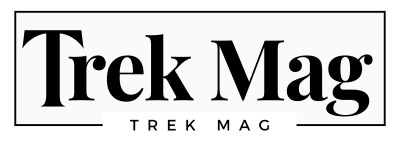Uniform smocks play a crucial role in numerous industries, from healthcare to education and hospitality. Designed for both functionality and professionalism, these garments have evolved significantly over the years, adapting to the specific needs of various sectors. In this article, we will explore the significance of uniform smocks, their features, and their impact on workplace culture and efficiency.
Historical Context
The use of smocks can be traced back to the 18th century, initially serving as protective garments for workers in trades such as agriculture and textile manufacturing. Over time, their design and purpose evolved, leading to their adoption in other fields like healthcare and education. Today, uniform smocks are synonymous with professionalism and competence, offering both practical benefits and a sense of identity within a workplace.
Functionality and Design
Uniform smocks are designed with functionality in mind. They often feature durable, stain-resistant fabrics that can withstand the rigors of daily tasks. For instance, in a hospital setting, medical professionals require garments that are easy to clean and provide protection against spills and contaminants. Smocks are typically loose-fitting, allowing for ease of movement, which is essential for professionals who are on their feet for long hours.
In educational settings, smocks are often worn by teachers and students during art or science classes. They protect clothing from spills, stains, and other messes, ensuring that creativity and learning can occur without the worry of ruining everyday attire. The versatility of smocks makes them an excellent choice for various activities, from cooking classes to laboratory work.
Professionalism and Branding
Uniform smocks not only serve a practical purpose but also contribute to a sense of professionalism and branding within a workplace. In industries where employees interact directly with clients or customers, such as hospitality or healthcare, wearing a uniform smock can enhance the perception of competence and reliability. A well-designed smock can convey a sense of authority and expertise, instilling confidence in clients and creating a positive first impression.
Furthermore, smocks can be customized with logos, colors, and other branding elements. This personalization fosters a sense of belonging and unity among staff, reinforcing the organization’s values and mission. In a competitive market, having a cohesive and professional appearance can set a business apart from its competitors.
Comfort and Safety
Comfort is a critical factor in the design of uniform smocks. Employees who feel comfortable in their attire are likely to be more productive and focused on their tasks. Smocks are often made from breathable materials that allow for ease of movement and ventilation, essential for workers in fast-paced environments.
In addition to comfort, safety is paramount in many industries. Smocks can be designed with features such as pockets for tools and equipment, ensuring that employees have easy access to what they need while minimizing the risk of accidents. For example, in a kitchen setting, a well-designed smock with secure pockets can keep knives and other utensils safely stored, reducing the chance of injury.
Psychological Impact
The psychological impact of wearing a uniform cannot be understated. Studies have shown that uniforms can boost morale and foster a sense of team spirit among employees. When individuals wear the same attire, it helps to create an egalitarian atmosphere where everyone feels valued and part of a collective effort. This sense of belonging can lead to increased job satisfaction and reduced turnover rates.
In educational settings, uniform smocks can promote a focused learning environment. Students wearing smocks are less distracted by personal fashion choices and are more likely to concentrate on their tasks. Additionally, uniformity can reduce social barriers, allowing students to engage more freely with one another.
Challenges and Considerations
Despite their numerous benefits, implementing uniform smocks can present challenges. Some employees may resist wearing uniforms due to personal style preferences or comfort issues. Organizations must consider feedback from staff when choosing smock designs to ensure they meet the needs and preferences of their workforce.
Moreover, the cost of providing uniform smocks can be a concern for some organizations. However, investing in quality smocks can lead to long-term savings, as they are typically more durable and require less frequent replacement.
Conclusion
Uniform smocks are more than just functional garments; they are essential tools that contribute to professionalism, safety, and comfort in various industries. From enhancing branding to promoting teamwork and focus, Direct textile store the benefits of uniform smocks are manifold. As organizations continue to recognize the value of a cohesive and professional appearance, the role of uniform smocks will undoubtedly remain significant in shaping workplace culture and efficiency.
In an ever-evolving job market, where the competition is fierce and expectations are high, the importance of a well-designed uniform smock cannot be overlooked. By prioritizing the needs of their employees and investing in quality uniforms, organizations can foster a positive work environment that enhances productivity and satisfaction for all.








